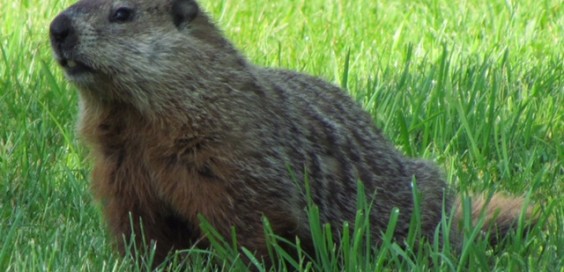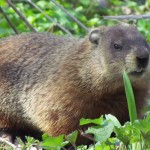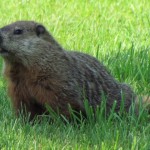
Creature Feature – The Woodchuck (Groundhog)
Posted by Dustin Horton // February 18, 2019 // Articles, Creature Feature
February 2nd, Groundhog Day: the traditional emergence of a sleepy, shadow-seeking rodent from its winter den. In reality, woodchucks are more apt to leave their burrows some time in March. The first ones to venture out in the spring are usually older males. Woodchucks are semi-fossorial, meaning they spend much of their lives underground, an existence for which they are well suited. They use their strong legs and thick claws to excavate simple, or some times interconnecting, tunnels, and employ tough teeth to chew through roots and loosen small rocks. Woodchucks live in pastures and fields, forest clearings and along grassy roadsides. Clovers, grasses, flowers, buds, fruits and garden crops make up most of their diet. They breed in early spring, and babies are born after a gestation of 30-33 days. They are tiny, weighing just 1 to 1-1/2 ounces each, and their eyes won’t open until they’re 28 days old. The mother cares for them until they’re ready to disperse in July or August. Hibernation begins in the fall, within a snug, earth-plugged underground chamber. During hibernation, their heartbeat slows to just 4-5 beats per minute. Woodchucks lose 30-40 percent of their body weight over the winter due to fat depletion. Unlike some animals, they don’t store food for the winter, instead relying on fat reserves to see them through.
Article & Photo by Margie Manthey















